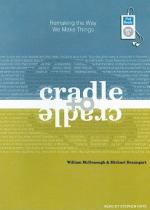|
This section contains 912 words (approx. 3 pages at 400 words per page) |

|
Putting Eco-Effectiveness into Practice Summary and Analysis
In 1999, William Clay Ford, great-grandson of Henry Ford, decides to renovate their huge River Rouge factory in Dearborn, Michigan. It is innovative but highly consumptive of materials when it is first built in the 1920's. Bill, one of the authors of this book, is asked to help redesign the factory. Many employees contribute ideas. Research reveals any toxicity problems to be fixed. The whole plant is redesigned with the principles of this book. Water is to be cleaned so well that it can be used for drinking. Toxicity is to be removed from all layers of soil, using natural and surprising methods, such as mushrooms and fungi. The goal is to create healthy soil, where even employees' children can safely play. Additionally the company seeks ways to enhance the environment without causing financial problems. Managing...
(read more from the Putting Eco-Effectiveness into Practice Summary)
|
This section contains 912 words (approx. 3 pages at 400 words per page) |

|




